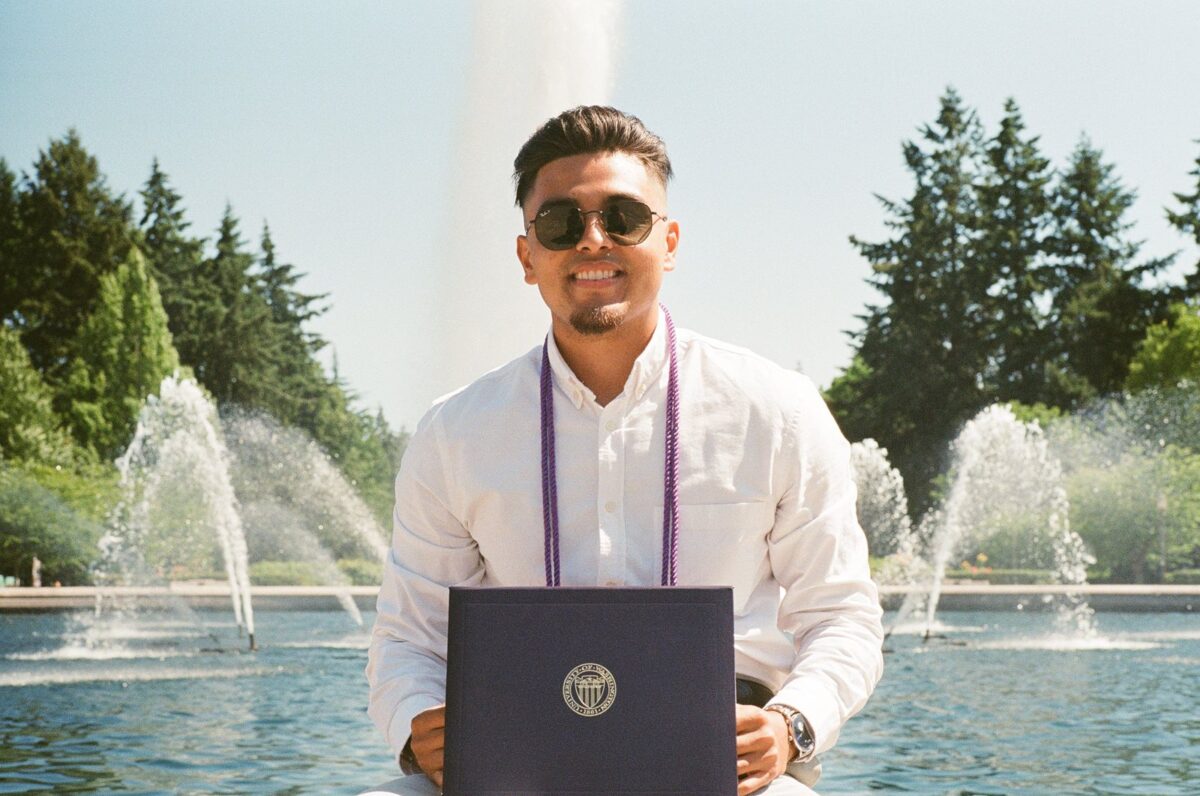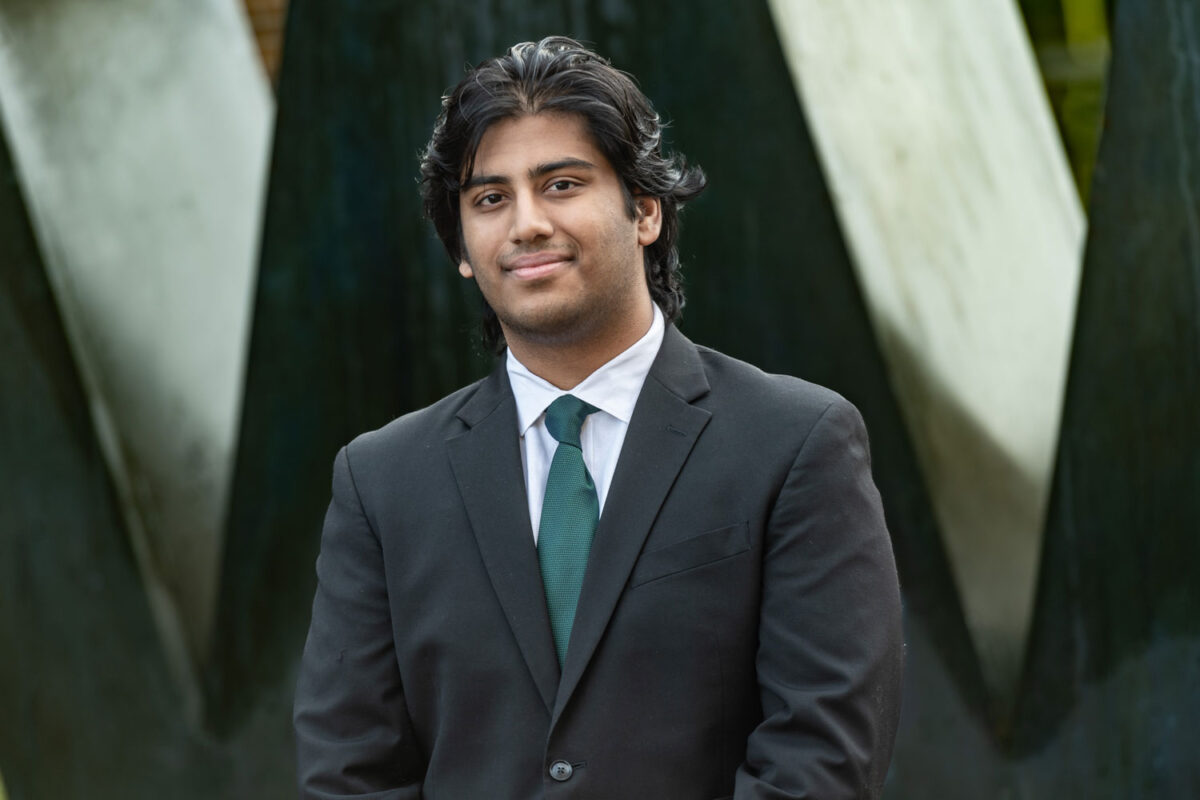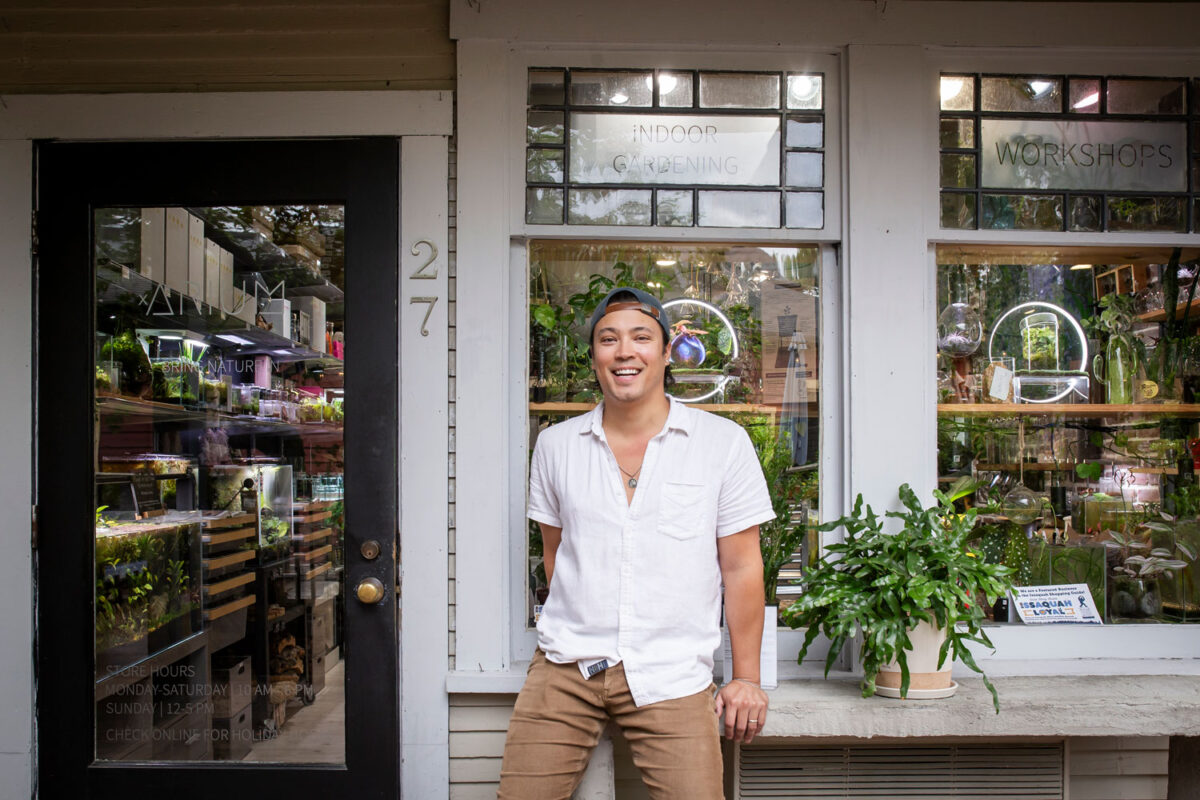02/26/2023
Virtual reality is commonly associated with entertainment as it is now used in popular video games, 3D cinemas and even amusement park rides. It works particularly well in these applications because, unlike interfaces before it, the latest techniques in virtual reality can make users genuinely feel that they are in a completely different environment.
This is partly accomplished through headset designs that block all peripheral vision. “Before virtual reality, people would play video games or watch movies with a greater sense of separation as they could still see and hear their environment in addition to their entertainment,” said Omar Paez, now a 2022 alumnus of the University of Washington Bothell.
“With virtual reality, these senses are stripped away, and the only thing users can see and hear are the sights and sounds created in this artificial world. It tricks the brain into believing the body is elsewhere.”
But this level of entertainment is just one of the powerful experiences virtual reality can offer, he said, asserting that it can also be used to help people and businesses better understand and then address issues related to climate change.
“It isn’t just a technology that can halt human boredom,” Paez said. “I think its potential is much greater.”
And it is this ambitious potential that Paez selected for his final research paper while a student at UW Bothell.
Breaking through mental barriers
Paez, who received a degree in Business Administration, has long been aware of the destructive impacts of climate change — from rising sea levels and warmer oceans to longer, more intense droughts. But it wasn’t until his senior year at UW Bothell that he became engaged in the possibility that virtual reality could help mitigate harm to the planet.
It clicked during a job interview, Paez said, when a company representative asked him, “How can we use software to tackle a current, global issue?”
Having been passionate about protecting the earth since early childhood, his mind immediately went to sustainability. “I started thinking about how the future of the earth has only gotten bleaker as time progresses,” he said, “and then I started to think about why.
“I came to the realization that the information we are given related to climate change is predominately through graphs, numbers and statistics — and it can feel so far removed from our present,” Paez said. “We don’t see what the Earth will look like when our children are our age. We don’t feel the pain they will experience if these trends continue. And really we don’t empathize, so we don’t change.”
Virtual reality, however, stands a chance at changing that dynamic, Paez believes.
Experiencing the future in the present
“We no longer need to ask people to imagine what the world will be like based off the numerical data we give them,” he said. “With this technology, we can instead ask them to experience the very world they are leaving for future generations if they don’t modify their behavior. We can make it real for people.”
The quarter following his thought-provoking interview, Paez enrolled in the independent study course with Ibrahim Demir, a lecturer in the School of Business, meeting with him on a weekly basis for more than three months to research the possibilities. “Omar was very studious and eager to learn about new subjects,” Demir said. “His research reflected his enthusiasm in the many different angles with which he approached the relationship between VR and climate change. I can sincerely say I learned a lot from reading his paper.
“Ibrahim always asked the hard questions,” he said. “He always made me think deeper about what I was learning and left me wanting to know more. His questions encouraged me to get a more comprehensive understanding of how virtual reality can impact many different sectors relating to sustainability.”
One of these sectors has to do with the wind power industry.
“Electricity is commonly generated from fossil fuel power stations which create hazardous air pollutants, whereas wind turbines create energy from the wind and do not release any carbon emissions,” said Paez. “Using wind turbines can dramatically lower total air pollution.”
Virtual plans turned into reality
Prior to his independent study work, Paez had spoken to Demir about the environmental benefits of wind turbines. Demir agreed but also asked what Paez thought about the price and risks of wind turbines.
One of the factors that deter companies from building wind turbines is the cost, which can range from $2 million to $4 million. “Committing to this large of an investment is daunting even if success is guaranteed, but with wind turbines, this is scarcely the case,” Paez said. “Wind turbines excel in very high and very dry environments, and building in those conditions is extremely challenging.”
So the initial answer to Demir’s question was no, investment decisions are not always realistic — but perhaps virtual reality can change what is considered possible.
“The technology can aid in this process,” Paez explained, “by allowing companies to create a simulation of how the conditions will impact workers and, with that, the ability to determine if the project is feasible. Before investing into any operations, companies can now use virtual reality to see how different environmental variables will impact the building process as well as become aware of any potential obstacles ahead of time.
“It eliminates the risk, justifies the cost and, in my opinion, makes it achievable.”
Mixed reality on a new magnitude
More potential benefits of virtual reality don’t stop there, said Paez. He also believes the software can mitigate business travel and thus C02 emissions, too.
“Virtual reality can reduce the need for in-person work environments. Millions of people commuting to work every day has left a mark on our environment as road vehicles make up 75% of the gas emissions that come from travel. It adds up quickly.”
The alternative, Paez said, could be using virtual reality to create a metaverse that allows for employees to have more meaningful interactions than what is currently possible in online videos.
“The problem with videoconferencing is that it removes the ability to interact with someone at more than face value. You want to meet the person, read their body language and get a feel for who they are as an individual,” Paez said. “With virtual reality, you can do that. Plus, people can feel as though they are actually in an office with their coworkers, brainstorming ideas.
“While mixed reality has never been brought to life on this magnitude,” he admits, “it is entirely possible.”
Take pride in the planet
Paez graduated from UW Bothell in December 2022, and while he will not yet be reporting to his boss in a metaverse, he will begin work as a consultant for Accenture this coming May.
“I plan to work with many organizations, businesses and companies that share a passion for sustainability and taking care of our Earth,” he said. “As humans, we have the ability to look at what we have done wrong in the past — and now we have the technology to fix where we have gone wrong and write a better future for generations to come.
“I strive every day to contribute to that,” he said. “And for people reading this, know that we can save our planet. Just like the four walls and roof that surround you every night, the Earth is your home, too, and I hope you take care of it. After all, it takes care of you.”




